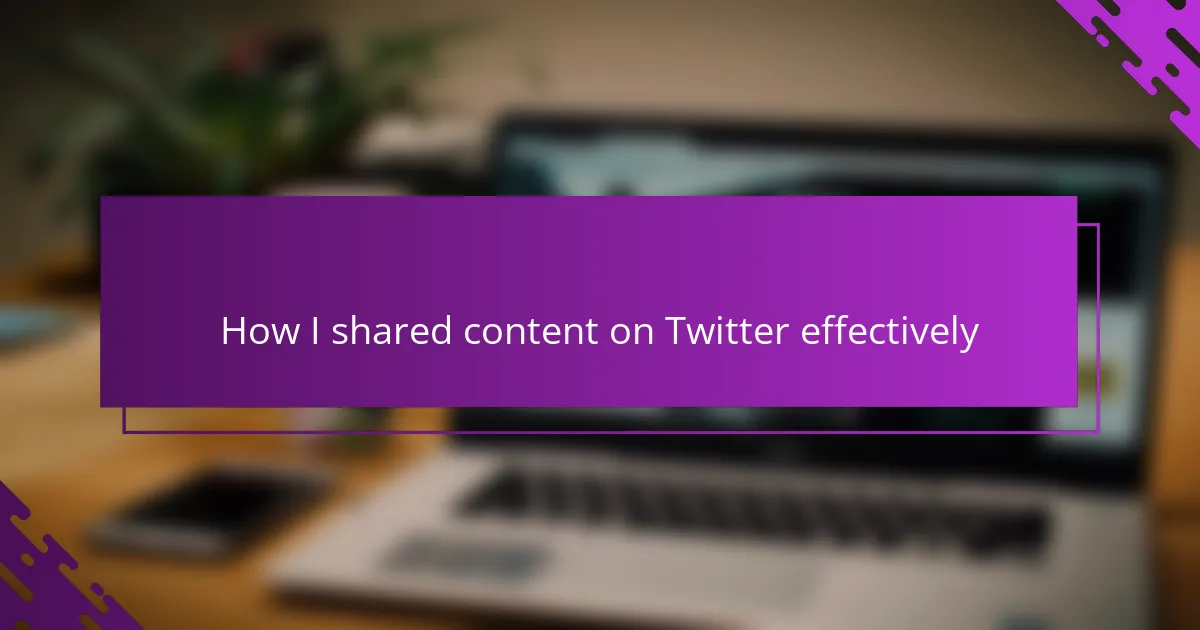Key takeaways
- Personal blogging on Twitter allows for concise storytelling, turning tweets into engaging mini-narratives.
- Optimizing your profile with a clear photo, thoughtful bio, and relevant header image establishes trust and invites interaction.
- Strategic content planning, including creating threads and mixing content types, enhances audience engagement and encourages dialogue.
- Utilizing scheduling tools and analytics can streamline posting and inform content strategies based on audience preferences.
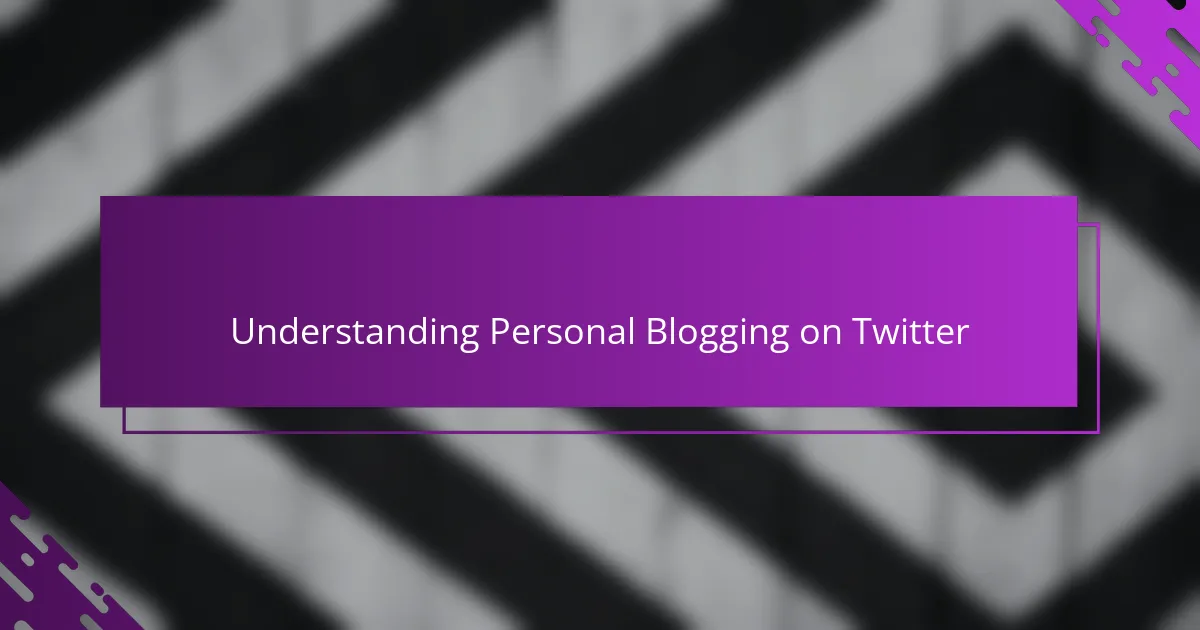
Understanding Personal Blogging on Twitter
Personal blogging on Twitter feels like having a constant conversation with the world, but in bite-sized pieces. I remember when I first started, I was surprised at how much personality I could fit into just 280 characters—it made me rethink the power of brevity. Have you ever wondered how sharing a simple thought can spark meaningful connections? For me, it’s about weaving small stories and reflections that resonate instantly, making the platform feel more like a personal diary than just a social network.

Setting Up Your Twitter Profile for Blogging
Your Twitter profile is your digital handshake when you start blogging there. I realized early on that a clear, approachable profile picture made a big difference—it’s the first thing people see, and it instantly builds trust. Have you ever judged a profile just by its photo? I certainly have, and it shaped how willing I was to engage.
Crafting a bio that feels both professional and authentic took me some trial and error. I wanted something that told my story in a few words but still invited curiosity. What’s great is that a well-written bio doesn’t just list facts; it invites others to join your narrative, making your blogging feel like an open conversation from the start.
Don’t underestimate the power of your profile’s header image either. I swapped mine a few times before deciding on a simple, calming graphic that reflected my blogging style. It’s subtle, but every detail matters when you’re setting the stage for your content and trying to make a memorable impression.
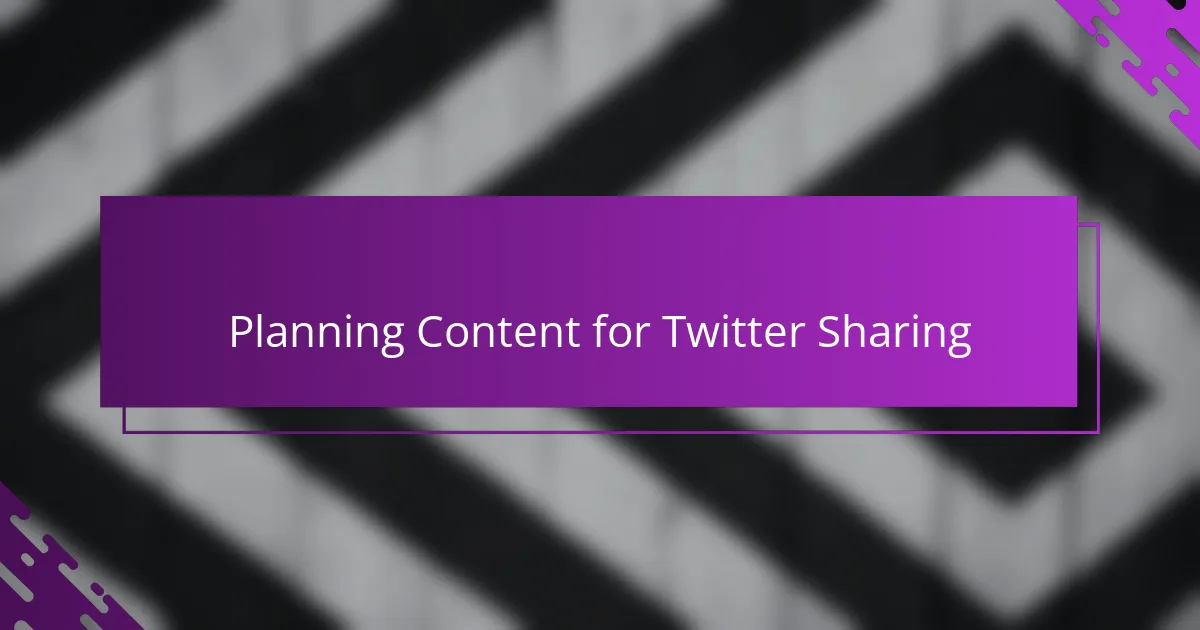
Planning Content for Twitter Sharing
Planning content for Twitter sharing became a game-changer for me once I stopped winging it. I started thinking strategically about what stories or insights would fit the quick, punchy style Twitter demands. Have you ever sat there staring at a blank tweet, unsure how to get your point across in such a tiny space? That feeling pushed me to outline key messages before posting, which made my tweets sharper and more impactful.
I found breaking down bigger ideas into a series of tweets helped keep my audience engaged over time. Instead of trying to cram everything into one message, I’d plan threads that unfolded like mini-stories. This approach not only allowed me to explore topics more deeply but also invited conversations, turning followers into active participants rather than passive readers.
Another thing I learned was to mix content types thoughtfully—sometimes a quick opinion, other times questions or quotes. Planning ahead meant I could balance promotional content with genuinely helpful or relatable tweets. I often ask myself, “What kind of post will spark a reaction or bring value right now?” That mindfulness made my Twitter presence feel less random and more like an ongoing dialogue.
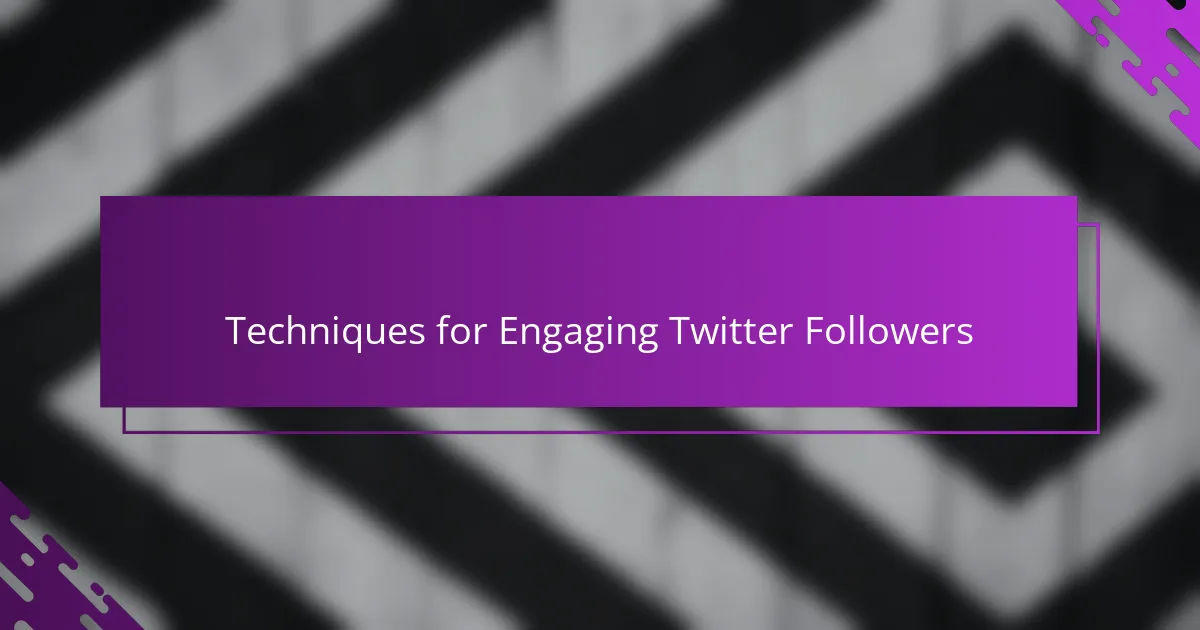
Techniques for Engaging Twitter Followers
One technique that really transformed how I engage with my Twitter followers is asking open-ended questions. Instead of just sharing my thoughts, I invite others to share theirs. Have you noticed how a simple question can turn a quiet feed into a lively conversation? For me, it’s those moments of back-and-forth that build genuine connections and keep people coming back.
I also realized that timing plays a subtle, yet powerful role. Posting when my audience is most active meant my tweets didn’t just disappear into the void. I experimented a lot—sometimes tweeting early mornings, other times late evenings—to find those sweet spots. It feels rewarding when you see engagement spike because your message landed at just the right moment.
Lastly, I never underestimated the power of visuals. Adding a relevant image or a short video made my tweets pop and grabbed attention faster. I remember one tweet sharing a simple behind-the-scenes photo sparked way more responses than just words alone. It’s like, in the fast-scrolling world of Twitter, a picture really does say a thousand words.
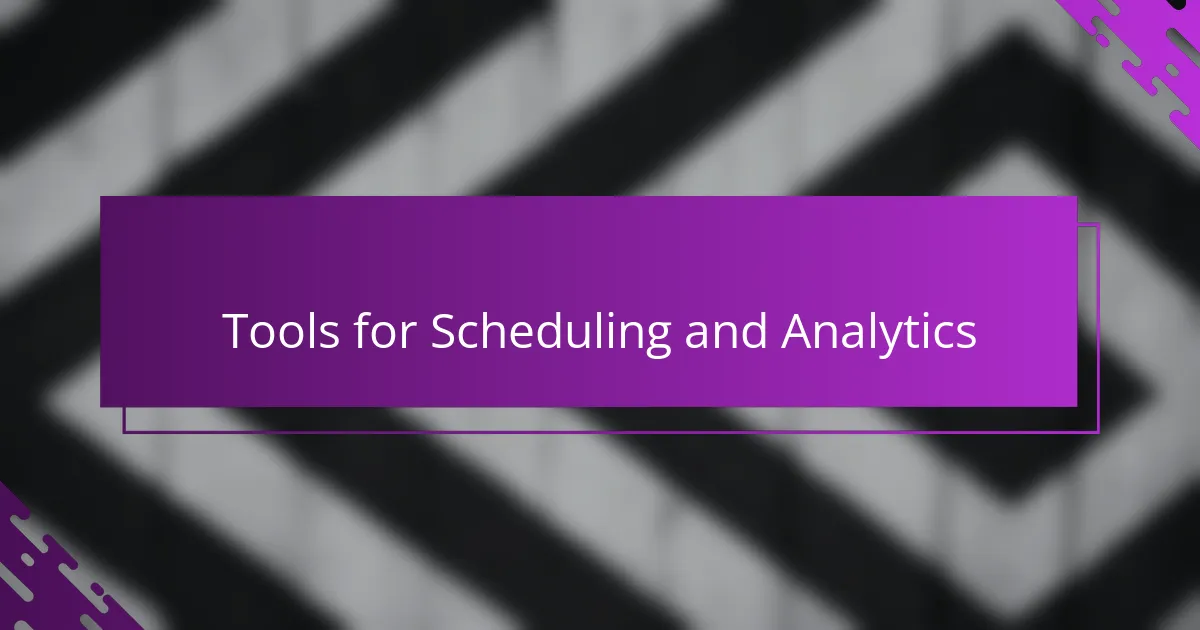
Tools for Scheduling and Analytics
Scheduling tools like Buffer and Hootsuite became my secret weapons for keeping a steady flow of tweets without feeling chained to my phone. Have you ever wished you could set it and forget it? Being able to prep a week’s worth of content in one sitting gave me the freedom to focus more on creating and less on constantly posting.
Analytics, on the other hand, felt like deciphering a secret code at first. When I started using Twitter Analytics, I realized which types of content truly resonated with my followers and the best times to share them. Seeing those engagement spikes gave me a little thrill every time, like uncovering what my audience really wanted to hear.
What I found most valuable was combining scheduling with analytics—allowing the data to guide my timing and content strategy. It made my blogging not just consistent but smarter. Could a couple of clicks on these platforms really make your personal blog on Twitter thrive? From my experience, absolutely.
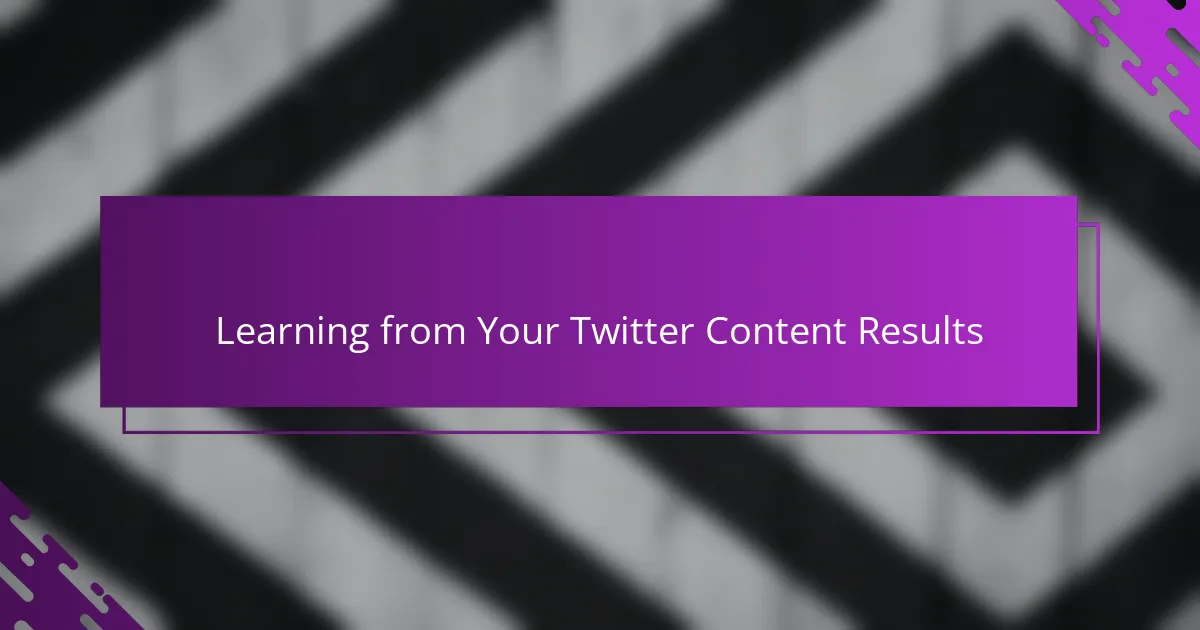
Learning from Your Twitter Content Results
Looking back at my Twitter content results felt a bit like reading tea leaves—I was continuously trying to make sense of what worked and what didn’t. Have you ever been surprised by a tweet that unexpectedly took off while another you thought was solid barely got a reaction? That unpredictability pushed me to dive deeper into understanding audience preferences rather than relying on gut feelings alone.
What truly struck me was the value of paying attention to engagement patterns over time. When I noticed certain topics or formats consistently sparked conversations or retweets, it felt like uncovering a hidden code to connecting with my followers. It wasn’t about chasing viral moments but learning to nurture the types of content that built authentic relationships.
I also found it empowering to treat every result—even the low-performing tweets—as a clue rather than a failure. Sometimes, less popular posts revealed what my audience wasn’t interested in, which was just as important as knowing what they loved. Does this mean I changed everything overnight? Not at all, but it guided me to adapt thoughtfully and keep evolving my Twitter voice.
